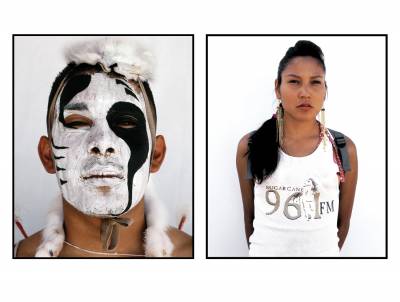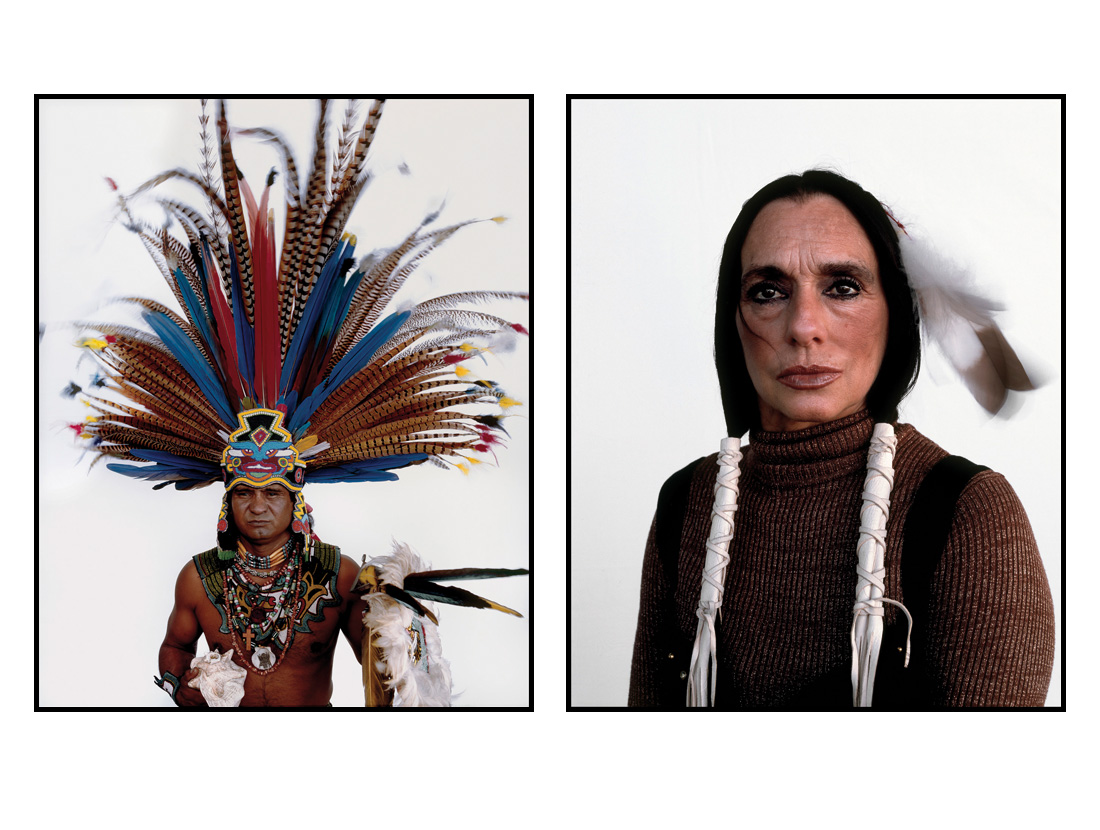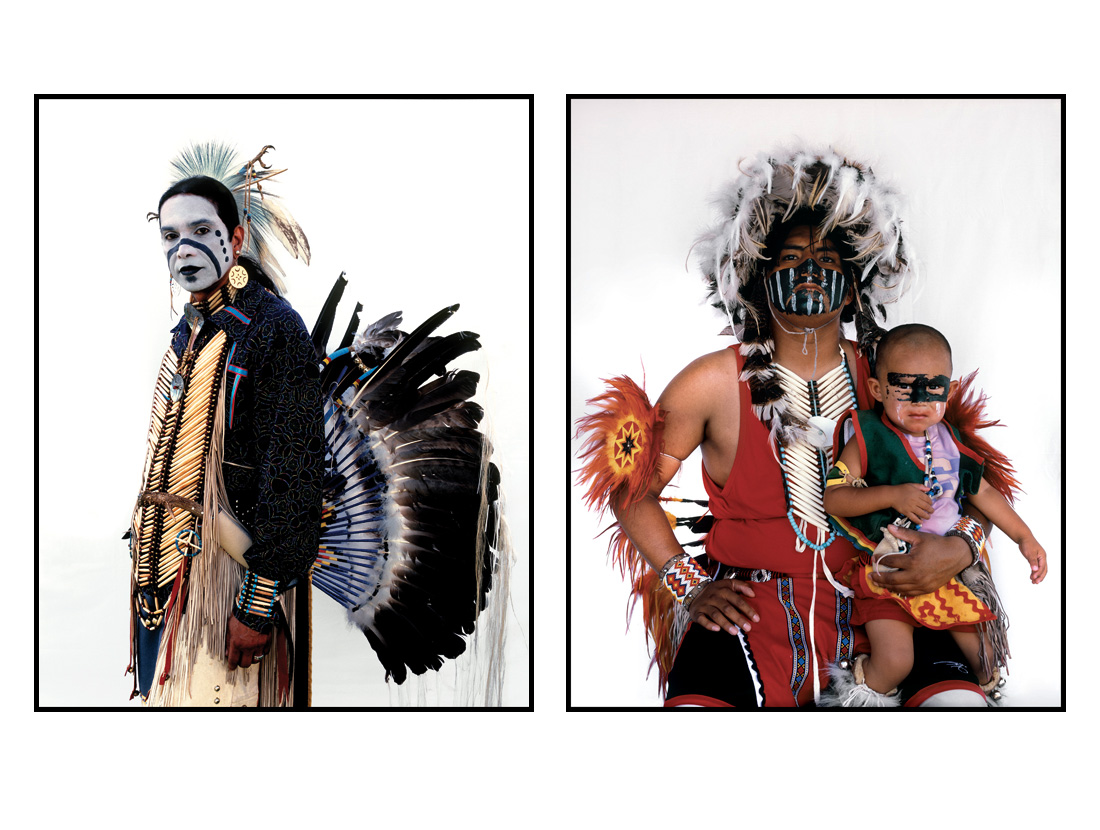Over 100 years ago Edward S Curtis set out on a mission to make an extraordinary photographic record of Native American Indian life. When he finished, he produced what remains one of the largest and most important works in the history of photography, depicting the indigenous people of North America as proud and defiant warriors living traditionally in tepee villages, wearing blankets and furs, fishing with spears and taking part in sacred ceremonies.
Fighting spirit: a record of Native American Indian life
14th March 2013
In contrast to the highly staged and romanticised early 20th-century photos of Native American Indians, these latest portraits reveal the struggle of an increasingly marginalised people intent on retaining their culture and heritage.
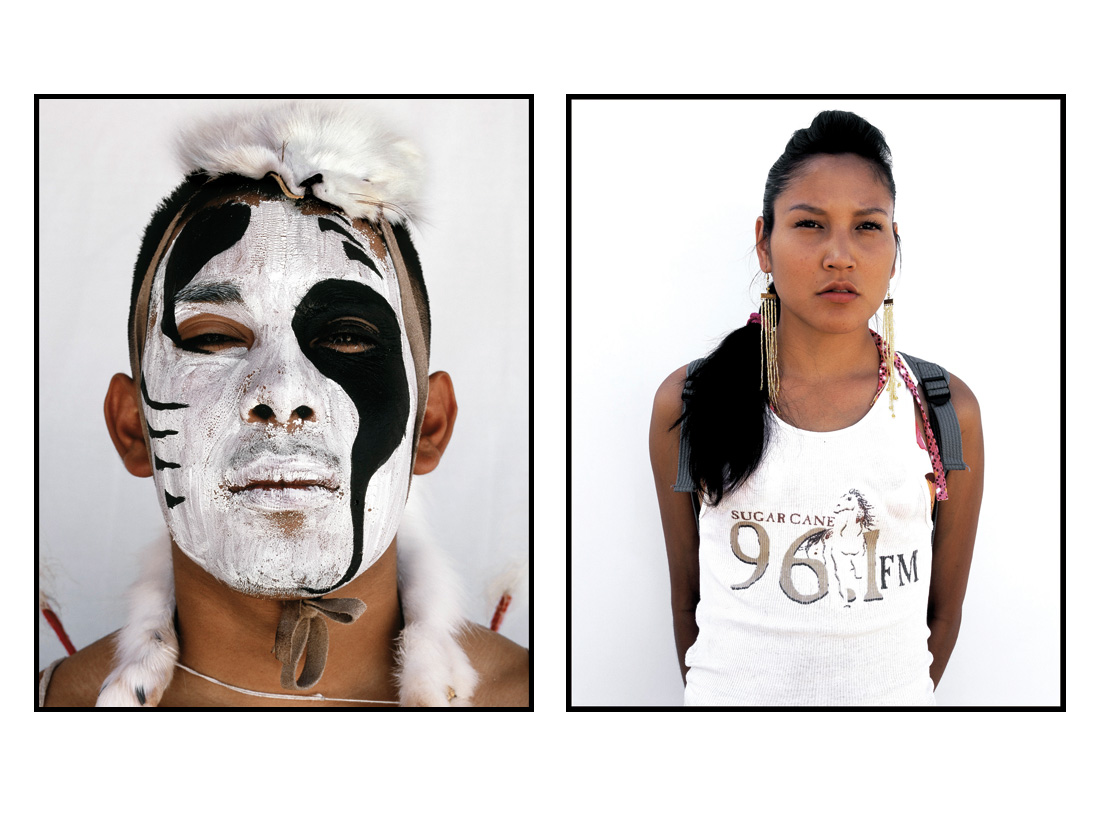
Left: Robert, a dancer in ceremonial face paint, from the Tewa tribe, whose homelands are near the Rio Grande in New Mexico. Right: Desiree, one of the new generation of well-educated youngsters, works for a radio station and was photographed at the Williams Lake Stampede—a rodeo held every July in British Columbia.
Yet these highly romanticised images, published in Curtis’ 20-volume work The North American Indian, 1907-1930, were far from a true representation of North American Indians at the time. In fact, it became evident that Curtis had staged some of these photographs, using fake studio backgrounds, adding props, removing all signs of modernity, and even employing actors. Curtis may have had good reason to use these controversial methods. With North American Indian culture in demise by the time he started his project—the Native population had been halved through genocide, warfare and disease, their basic rights were denied and they were living in squalid reservations—he wanted to document, for one last time, the traditional ways of what he perceived to be a vanishing race.
More than a century later, the German-born, Canada-based photographer Eric Klemm has picked up where Curtis left off, embarking on a one-year trip across the United States and Canada in 2006, photographing more than 120 tribes, bands and nations. Klemm’s objective was to capture the real faces of contemporary Native American Indians.
Travelling tens of thousands of miles, from British Columbia to Texas, California to Florida, Klemm found his subjects on the streets, on reservations and at gatherings, such as powwows and stampedes. In contrast to Curtis’ romantic outdoor and studio backdrops, Klemm photographed his subjects spontaneously, in traditional and modern dress, in natural light and against a neutral, white background “to show each person as an individual by removing any extraneous information”. The result is a series of hauntingly beautiful portraits of “the people who refused to give up”, says Klemm, capturing both the hardships experienced by today’s North American Indians and the immense pride in their culture. His subjects include the homeless and unemployed, alcoholics and drug addicts, as well as those who transform the old stereotypes—artists, a Grammy-award-winning musician and a new generation of well-educated young people.
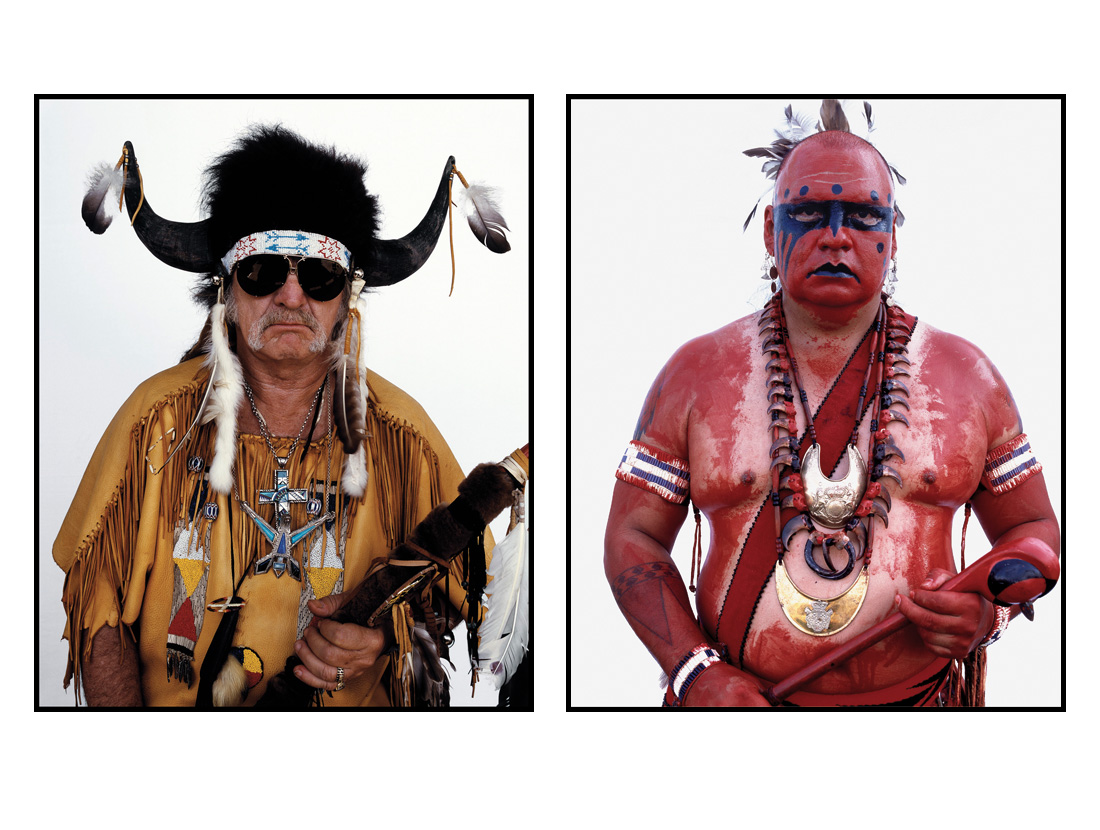
Left: Harvest, who calls himself a Shawakan, meaning “raised to be a Holy Man”, is a Christian minister who wants to raise awareness of Native culture Right: Sonny, a Cherokee dancer wearing ceremonial face and body paint for his performance at the annual American Indian Arts Celebration. Face and body painting was traditionally used to mark special ceremonies and before entering battle
“While Klemm re-inscribes the romance that Europeans have always had with Indians, he also moves his camera behind the façade of feathers and paint, and captures the tragedy and the humour, the desperation and the hope of contemporary Native life,” says Cherokee novelist and academic Thomas King at the beginning of Silent Warriors: Portraits of North American Indians, Klemm’s collection of more than 200 images. “These photographs are not an attempt to recreate an imagined past. The photographs are 21st-century images of 21st-century people.”
The 21st century has certainly improved the economic and social position of North America’s indigenous population, thanks to the re-emergence of self-ruling tribal governments, greater legal rights and increased commercial opportunities. Cultural traditions have also been revived, matched by a growing public awareness and appreciation of their heritage. Nevertheless, Native American Indians are still fighting a series of injustices, including inequality, poverty and lack of education. Their communities also have to address a litany of social problems, from substance and domestic abuse to gang activities. Klemm’s desire is that his portraits will help highlight some of the challenges they face: “It is my hope that this book helps [people] to understand the North American Indians better in their ongoing fight to survive, and their struggles to keep their cultures and traditions alive”. Fine art prints of Eric Klemm’s images are available to buy directly from www.ericklemm.com or by emailing [email protected].
